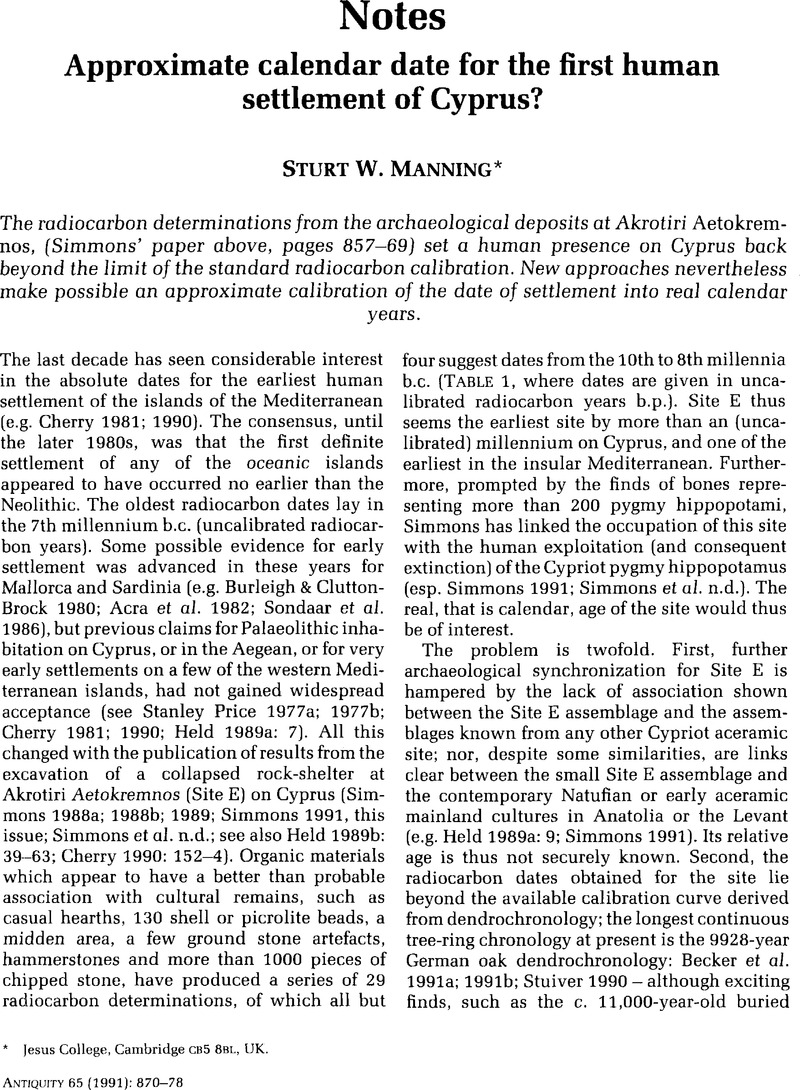Crossref Citations
This article has been cited by the following publications. This list is generated based on data provided by Crossref.
Simmons, Alan H.
1991.
Humans, island colonization and Pleistocene extinctions in the Mediterranean: the view from AkrotiriAetokremnos, Cyprus.
Antiquity,
Vol. 65,
Issue. 249,
p.
857.
Knapp, A. Bernard
Held, Steve O.
and
Manning, Sturt W.
1994.
The prehistory of Cyprus: Problems and prospects.
Journal of World Prehistory,
Vol. 8,
Issue. 4,
p.
377.
Bennet, John
and
Galaty, Michael
1997.
Ancient Greece: Recent developments in Aegean archaeology and regional studies.
Journal of Archaeological Research,
Vol. 5,
Issue. 1,
p.
75.
Sert, Hakan
Slimen, Hichem Ben
Erdoğan, Ali
and
Suchentrunk, Franz
2009.
Mitochondrial HVI sequence variation in Anatolian hares (Lepus europaeus Pallas, 1778).
Mammalian Biology,
Vol. 74,
Issue. 4,
p.
286.
2011.
The Mediterranean Context of Early Greek History.
p.
256.
Özdoğan, Mehmet
2019.
Eastern Mediterranean Port Cities.
p.
29.


